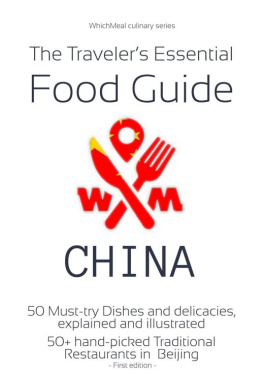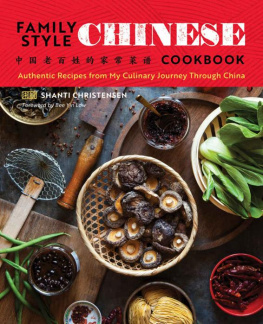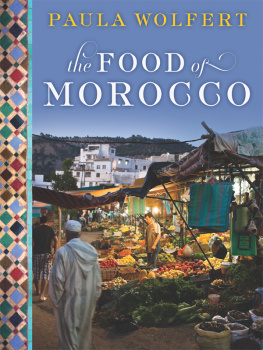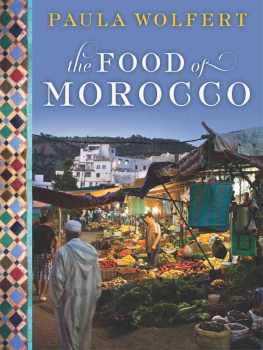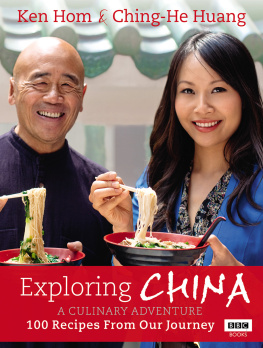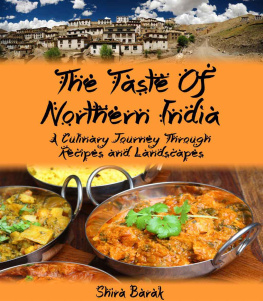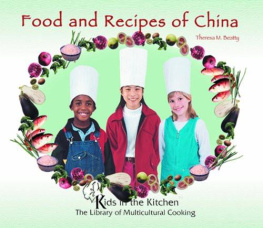China food travel guide
Here you can read online China food travel guide full text of the book (entire story) in english for free. Download pdf and epub, get meaning, cover and reviews about this ebook. year: 2014, publisher: WhichMeal publications, genre: Home and family. Description of the work, (preface) as well as reviews are available. Best literature library LitArk.com created for fans of good reading and offers a wide selection of genres:
Romance novel
Science fiction
Adventure
Detective
Science
History
Home and family
Prose
Art
Politics
Computer
Non-fiction
Religion
Business
Children
Humor
Choose a favorite category and find really read worthwhile books. Enjoy immersion in the world of imagination, feel the emotions of the characters or learn something new for yourself, make an fascinating discovery.
- Book:China food travel guide
- Author:
- Publisher:WhichMeal publications
- Genre:
- Year:2014
- Rating:4 / 5
- Favourites:Add to favourites
- Your mark:
- 80
- 1
- 2
- 3
- 4
- 5
China food travel guide: summary, description and annotation
We offer to read an annotation, description, summary or preface (depends on what the author of the book "China food travel guide" wrote himself). If you haven't found the necessary information about the book — write in the comments, we will try to find it.
Unknown: author's other books
Who wrote China food travel guide? Find out the surname, the name of the author of the book and a list of all author's works by series.
China food travel guide — read online for free the complete book (whole text) full work
Below is the text of the book, divided by pages. System saving the place of the last page read, allows you to conveniently read the book "China food travel guide" online for free, without having to search again every time where you left off. Put a bookmark, and you can go to the page where you finished reading at any time.
Font size:
Interval:
Bookmark:
The Travelers essential
F o o d g u i d e

C H I N A
Copyright 2014 WhichMeal Inc. All rights reserved worldwide.
Table of Contents
No written content of this document or the related files may be reproduced or transmitted in any form, by any means (electronic, photocopying, recording, or otherwise) without the prior written permission of the publisher.
- First edition, published on December, 17th 2014
WhichMeal and its logo are properties of WhichMeal Inc.
--------------------------------------------
This publication is protected under the US Copyright Act of 1976 and all other applicable international, federal, state and local laws, and all rights are reserved, including resale rights: you are not allowed to give or sell this digital guide to anyone else. If you received this publication from anyone other than official distributors, youve received a pirated copy. Please contact us via e-mail at contact@whichmeal.com and notify us of the situation.
WhichMeal publications would ask that you do not share this information with others-you purchased this book, and you have a right to use it on your system. Another person who has not purchased this book does not have that right. It is the sales of this valuable information that makes the continued publishing of WhichMeal guides possible. WhichMeal digital guides cannot be post (or the information it contains) wihtour prior consent on any electronic bulletin board, Web site, FTP site, newsgroup, Peer to peer (P2P) platforms.
---------------------------------------------
Limit of Liability and Disclaimer of Warranty: The publisher has used its best efforts in preparing this book, and the information provided herein is provided as is. WhichMeal makes no representation or warranties with respect to the accuracy or completeness of the contents of this book and specifically disclaims any implied warranties of any "food experience satisfaction" while travelling, and shall in no event be liable for any loss of profit or any other commercial damage, including but not limited to special, incidental, consequential, or other damages.
Copyright 2014 WhichMeal Inc. All rights reserved worldwide.
Foreword
About
This publication is not a cookbook.
WhichMeal food guides are designed to escort you through your food journey. It is a food advisor on the go for world travellers interested in culinary experimentations; a reliable fellow to help you take the best of a new cuisine you are exploring, whether it is from the comfort of your own kitchen, the ethnic restaurant next door or wandering in far away lands.
We believe cuisines of the world are astounding and meant to be shared and enjoyed by all. WhichMeal guides are just a way to see clearer, and help you discover the greatest dishes world cuisine has to offer.
We hope you like it.
www.whichmeal.com
About Chinese food
Introduction to Chinese cuisine
Steeped in tradition and mystique, the Chinese ways have always intrigued people the world over. One of the earliest hubs of socialization and civilization, China has reigned supreme in the Asian continent where food and its hearty appreciation are concerned! According to philosopher Yin Yutang, the Chinese soul loves to delve deep into the subtle intricacies of flavor and aroma and bursts into joyous celebration at the sight of a burgeoning platter.
Chinese cuisine is diverse and because of the Silk Route has over time assimilated foreign influences to give birth to the eclectic plethora of dishes that is associated with it. China and thus its food has benefited greatly from the Confucian principle of balance and most of the dishes are a panoply of color, texture and flavors- sweet, sour, hot and salty. Pork, shrimp, duck, shallots, red chilies, sesame oil, bean curd, fish sauce and tofu are some of the staples complementing rice and the other starches to create the perfect Chinese meal. Even though the cuisine of the country which was known to the Western World as the Land of the Golden Throne boasts of several thousand unique dishes, there are 8 main regions which can be identified as the culinary heartland of China- Anhui, Cantonese, Fujian, Hunan, Jiangsu, Shandong, Szechuan and Zhejiang. An old saying that very succinctly states the pre-dominant flavors of the country can be used by adventurous travelers as a one line guide to the fireworks they can expect on their palate as they traverse the length and breadth of the vast and utterly captivating nation and goes something like: The East is sweet, the South's salty, the West is sour, the North is hot (, , , ).
No matter what you decide to sample, you will be charmed by the clean bold flavors and the varied textures that have come to characterize Chinese cuisine. Just dont forget the soy and the chopsticks!
Influences that shaped today's Chinese food
China is a country that is well known in the Western realms of the world for two things- the dedication and immense capacity of hard work its people display and the size of the nation! China is huge- 9596960 square kilometers across. And with a population of 1.3 billion human beings, it is no wonder that Chinese cuisine is a melting pot of cultural and ethnic influences from far and wide. The first notable influence on the eclectic meals of China is of the terrain. Being a country with vastly different climes in different parts, the people cooking with local produce made do with what was easily and abundantly available.
The Chinese culinary tradition dictates that food be compartmentalized into two main components- the starch or carbohydrate () and the meat, fish or vegetable portion (), stressing on the tenets of Confucian principles which mandate balance in everything including meals and nutrition. No matter how poor a home, Chinese food is always rich in colors, flavor and texture. To please the palate as well as the senses! Another reason for this approach is the population of the country which has always posed a problem. By 1000 AD the nation was severely overpopulated and near starvation was commonplace for many. Thus adding small portions of meat with cheaply available rice or noodles was the practice. Chilies, soy sauce, ginger and shallots served as garnish to better the taste. If we investigate the popular dishes of the present, these same flavors and ingredients form the foundation of the food.
Regional cuisines in China
The Eastern region of the country with its fertile soil has been home to many grazing animals and varied crops. Thus meals hailing from the east are pre-dominantly hearty with good helpings of vegetables and proteins with noodles or buns providing the carbohydrate quotient.
The Western region, by contrast is rugged and hilly. It is strongly influenced by Tibetan cuisine which thrives on the use of Yak milk and often meat from the sturdy animal. Thus even if Chinese food is still relatively shy of dairy products, the western dishes feature Yak milk.
China boasts a long coastline and seafood is the crown jewel of the Chinese culinary tradition. Everything from plump coral prawns to whitefish to the vibrantly orange cuttlefish to the majestic fish heads used in the curries form a staple of the Chinese diet. Pigs have roamed the country for as long as history can stand testament and thus pork features royally in most schools of Chinese cuisine- be it the braised pork or sticky pork ribs.
Of late, another factor is contributing to the rapid evolution of Chinese food and culture. That is the power of the allure of the lifestyle of the west. More and more talented young people are receiving their education abroad and they are learning to meld and blend the Western influences with their most popular dishes to give birth to a whole new school of sumptuous food which is just as flavorsome and succulent but a touch more robust and less alien to the Western palate.
Next pageFont size:
Interval:
Bookmark:
Similar books «China food travel guide»
Look at similar books to China food travel guide. We have selected literature similar in name and meaning in the hope of providing readers with more options to find new, interesting, not yet read works.
Discussion, reviews of the book China food travel guide and just readers' own opinions. Leave your comments, write what you think about the work, its meaning or the main characters. Specify what exactly you liked and what you didn't like, and why you think so.

